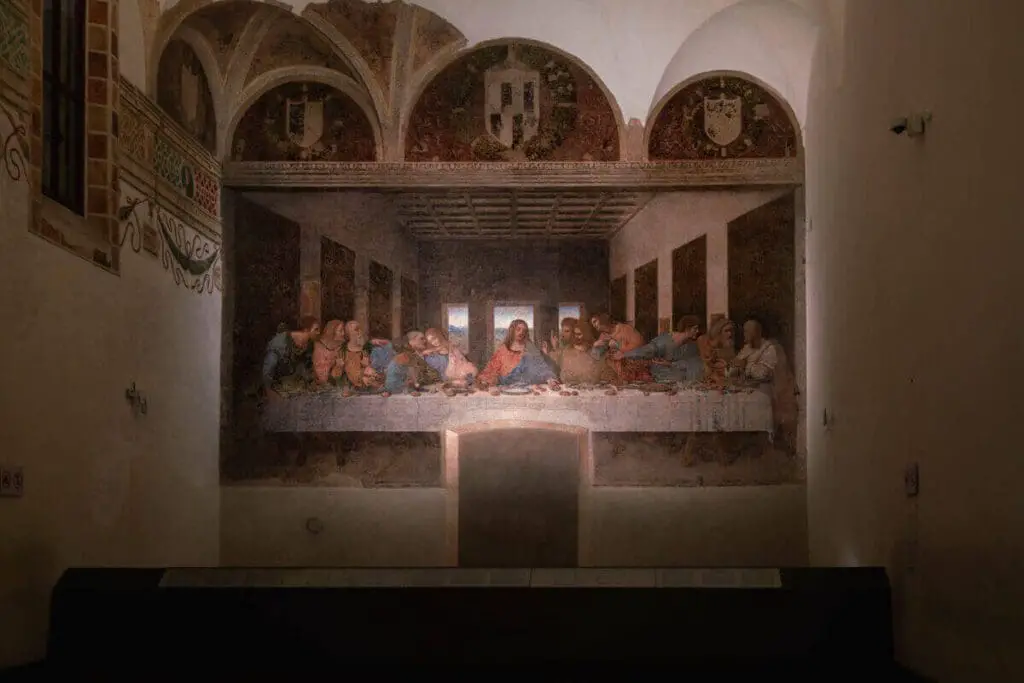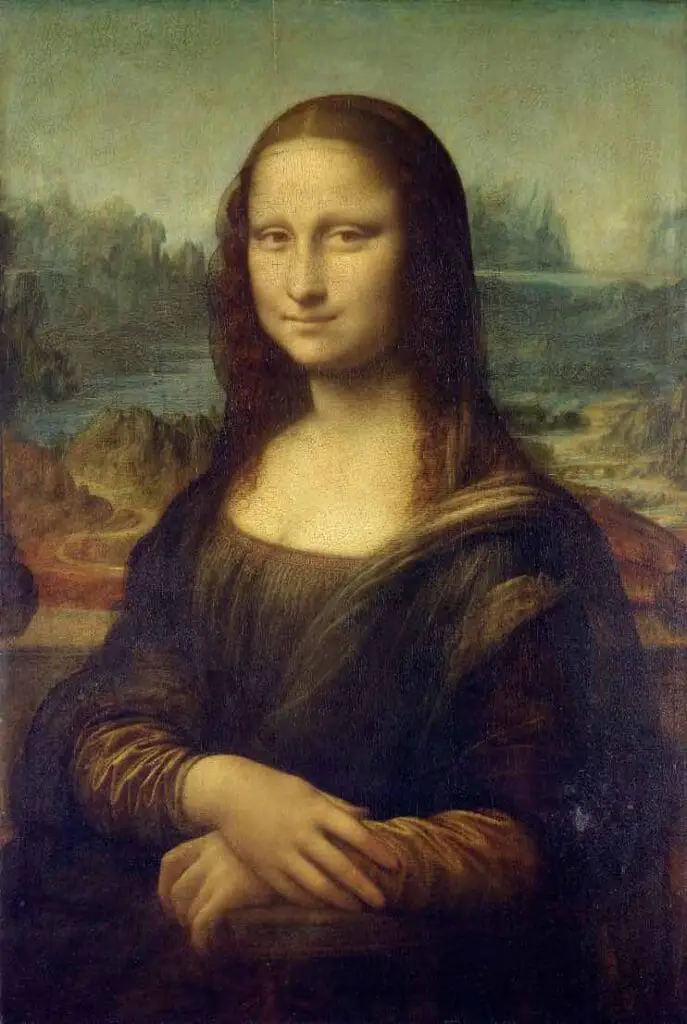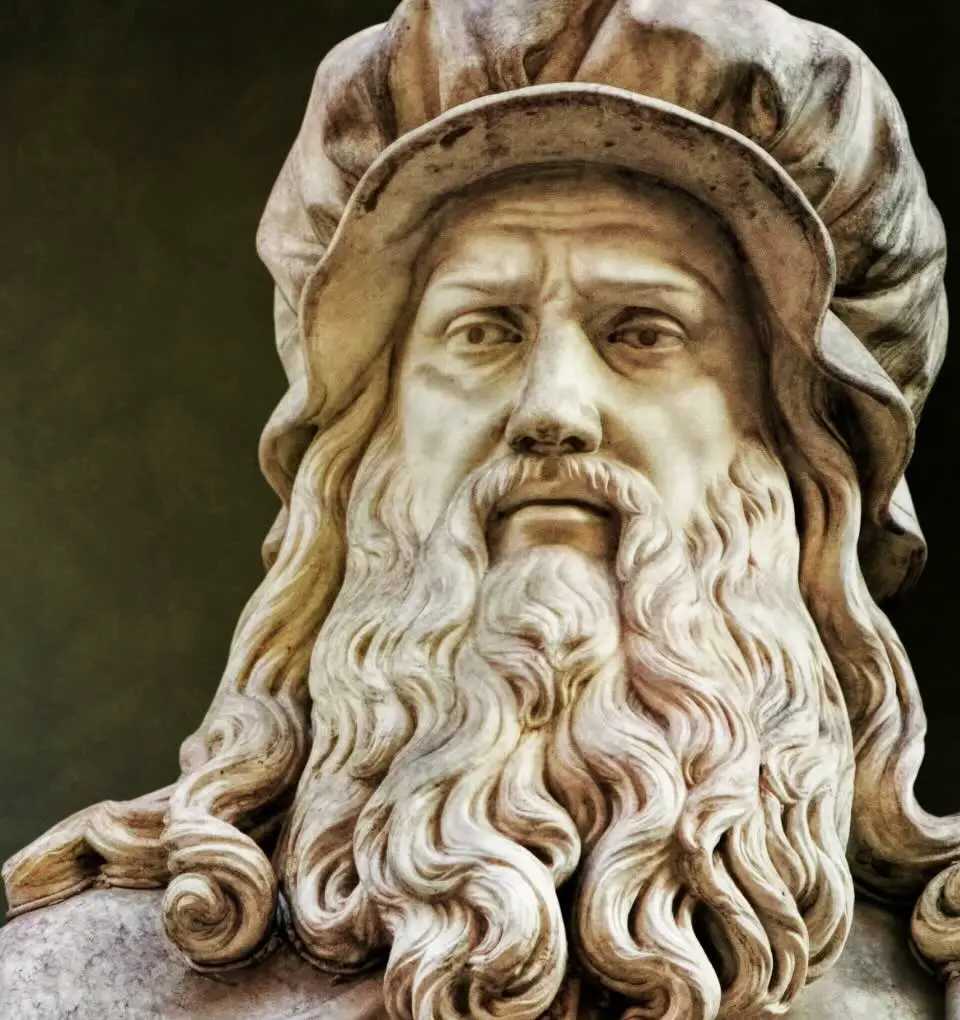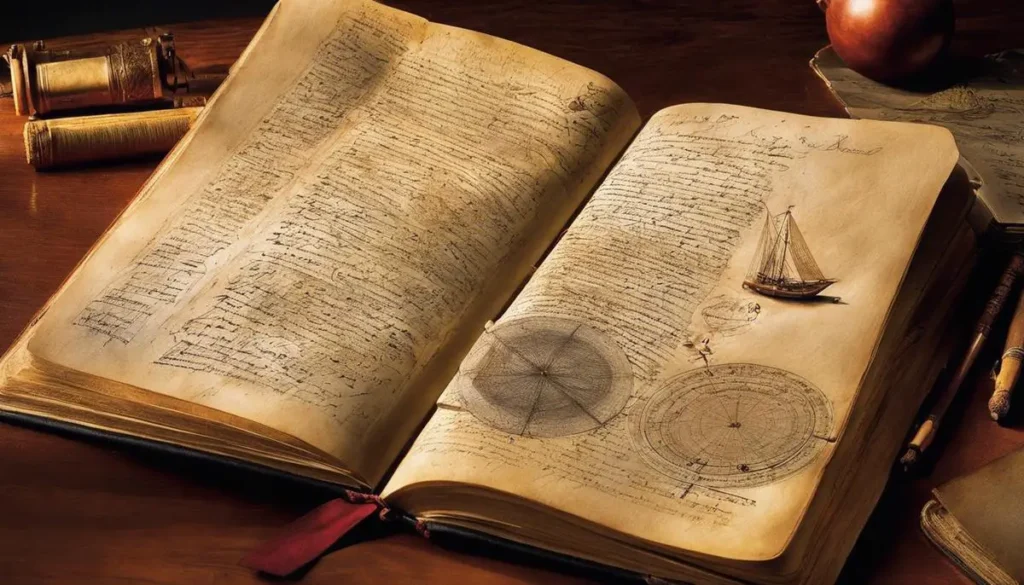With mind relentlessly curious and hand deftly skilled, Leonardo da Vinci is an enigma that continues to fascinate the world centuries after his passing. This Italian polymath, a true emblem of Renaissance Humanism, expanded the horizons of human understanding in fields far and wide. More profoundly, his extensive work is conserved in notebooks filled with sketches, designs, and musings, offering a window into his exceptional mind.
While often celebrated for his iconic works of art, Leonardo da Vinci’s notebooks reveal a man of unimaginable depth whose interests spanned anatomy to architecture, philosophy, and art. This exploration of Leonardo da Vinci and his notebooks aims to provide a deeper understanding of his genius and the remarkable legacy he left behind.
Table of Contents
- Understanding Da Vinci
- Decoding the Notebooks
- Scientific Revelations
- Impact on Art and Beyond
- Related Questions
Understanding Da Vinci
Born centuries ago, Leonardo Da Vinci continues to captivate audiences worldwide, inviting wonder with the stroke of a brush. Praised as one of the greatest minds of the Renaissance period, Da Vinci’s allure to the art world reaches far beyond his renown as an artist. Equally celebrated as an inventor, a scientist, a musician, and a writer, his extraordinary talent transcended disciplines, making him a true polymath of his time.
Leonardo Da Vinci, born in 1452 in Vinci, Italy, began his formative years as a novice under Andrea del Verrocchio, a leading artist in Florence. These years, they exposed him to a wealth of knowledge—from painting and sculpture to mechanics and carpentry. These diverse experiences were instrumental in shaping Da Vinci’s future, and it is here that perhaps the seed of his unparalleled genius was nurtured.

As his talent and reputation grew, so did his artistic triumphs. Da Vinci’s masterpieces, like “The Last Supper” and “Mona Lisa,” are milestones in the journey of art history. They are admired for their extraordinary detail, exploration of depth and form, use of light and shadow, and realistic portrayal of human emotion.
“The Last Supper,” a mural painting graces the refectory wall of Santa Maria delle Grazie convent in Milan, is a mesmerizing blend of artistic innovation and mathematical precision. Da Vinci transforms a traditional Biblical scene into an intense drama of human reactions, displaying genius in portraying multiple subjects in a single frame. Each apostle’s emotion is vivid, making the viewer feel part of the story.

In the “Mona Lisa,” the world beholds an enigma of a woman, her expression inviting numerous interpretations. The ‘sfumato’ technique or the smoky effect, Da Vinci’s style of blending colors and tones softly without lines or borders, lends an ethereal quality to the painting. This soft transition between hues and meticulous attention to detail differentiates Leonardo’s work, making it seem alive and real.
But why, centuries later, does Leonardo’s work remain significant? Simply put, Da Vinci revolutionized art. He broke free from the conformities of his time, merging art and science, pushing the boundaries of realism, and perfecting techniques that continue to bewitch artists and enthusiasts alike.
Da Vinci’s notebooks provide an intimate glimpse into his genius. They reveal his unquenchable curiosity about the world, his insatiable desire to explore every realm of knowledge, ranging from anatomy to engineering, and his relentless quest for perfection. From his theories of light and shadow to his intricate studies of human anatomy, Da Vinci’s dedication and enduring curiosity resonate in every corner of modern society and continue to inspire generations.
Moreover, his fusion of art and science, his delicate grace in presenting the truth of human emotions, and the mystery of nature make Leonardo Da Vinci an irreplaceable beacon of inspiration and ingenuity. Through his body of work and legacy, Da Vinci serves as a constant reminder that art and knowledge are intertwined and that creativity is boundless, enveloping every aspect of life.
Today’s world, immersed in the intertwining arenas of art and technology, owes much to the genius of Leonardo Da Vinci – an icon who thrived amongst the paradoxes of his time and continues to thrive amidst our paradoxes.

Decoding the Notebooks
Honoring The Depth of Da Vinci’s Intellectual Curiosity
Leonardo Da Vinci, a name synonymous with artistic brilliance and intellectual exploration beyond borders, was not just a painter but also manifested his genius in science, technology, anatomy, and architecture.
Encased within the robust covers of his notebooks, lovers of art will unearth a rich tapestry of knowledge, a testament to an unfettered mind that ceaselessly sought to unravel the mysteries of the universe.
The notebooks of Da Vinci, now precious relics of art history, bask in the revelation of his labyrinthine thoughts, deft sketches, elaborate inventions, meticulous anatomical drawings, and intricate botanical studies.
A significant aspect to appreciate about these treasured possessions is that their content lays bare an artist’s curious mind, a vulnerable exploration of the world that served as the crucible for symmetry between art and science.
Fascinatingly, Da Vinci’s notebooks give us an insightful glimpse of his unique approach to observing his environment. He was renowned for finding beauty in obscurity, art in the mundane, and innovation in the familiar.
His studies of birds in flight and rippling water symbolize his keen attention to the physics of the world, an influence that reverberates in how he rendered movement and light in his paintings.
In contrast to his contemporaries, Da Vinci did not limit his study to the physical attributes of his subjects but deeply examined the hidden gears underneath the outward presentation. His studies of the human body were enormously ahead of his time, combining art and science to gain a profound understanding of human anatomy, a knowledge he translated miraculously into his depictions of the human form in his art.
Da Vinci’s sketches, designs, and inventions unveiled in these notebooks declare his prophetic insight into the future of technology—from envisaging flying contraptions to experimenting with the concept of robots. Instead of daubing these as mere flights of fancy, let us consider the evidence of the unquenchable thirst of a Renaissance polymath envisioning the world beyond the constraints of time and orthodox thought.
These notebooks also provide access to Da Vinci’s creative process, his ambition for artistic perfection gradually unfolding on each page. The art world is bestowed with innumerable sketches underscoring the master’s practice of repeating studies from numerous perspectives to explore every minute detail, every subtle nuance.
The path of his artistic journey is etched along with his pursuit of perfection, unraveling a dimension of his dedication that goes beyond pure genius.
Da Vinci’s intellectual versatility thus propels him beyond the restraints of being identified simply as an artist or inventor. Positioned strategically at the crossroads of science and art, much like Vitruvian Man’s artwork, Da Vinci interwove his passions, spawning the priceless works cherished by generations.
As we delve into the heart of his notebooks, we don’t just behold intricate sketches or blueprints of inventions. We are exposed to the unlimited imagination of an unwavering mind, an intellectual vortex that sought coherence in chaos, discovered beauty in randomness, and strove for perfection in every conceivable domain of life.
Therefore, Leonardo Da Vinci’s notebooks are not just statements of artistic and scientific exploration; they are artifacts providing an intimate vista into his awe-inspiring mind, forever resonating with an insatiable quest for knowledge.

Scientific Revelations
Leonardo Da Vinci’s notebooks, a testament to his insatiable curiosity and multifaceted intellect, offer an unparalleled glimpse into the annals of a mind preoccupied with the connection between art and science.
The pages, filled with sketches, diagrams, and notes, transcend the barricade of time and spacetime, ushering us into the world as he saw it, whole and interconnected, where art was not separate from science but its complement and extension.
One cannot delve into Da Vinci’s notebooks without marveling at his unprecedented strides in human anatomy. Turning the parchment pages, one encounters meticulous drawings of the human body, from bones and muscles to the intricacies of the human heart. Leonardo, in his quintessential approach, did not simply replicate what he saw.
He sought an understanding, probing the function and purpose, transforming art into a tool of scientific inquiry. It was through this passionate exploration that he rendered the Vitruvian Man. This iconic image, drawn with striking precision and insight, seems to echo Da Vinci’s fascination with proportion and harmony in art and nature.
Leonardo even presages future technology in his fascination with the world around him. His sketches seem to prototype a helicopter, an armored vehicle, and even diving equipment centuries before their creation.
Seen in the light of the present, these sketches highlight Da Vinci’s visionary perspective. His illustrations demonstrate a creative genius that was not bound by the technological restrictions of his time but instead driven by imagination and scientific logic.
Peering more deeply into the heart of these notebooks, one finds precious glimpses into Leonardo’s creative process, characterized by his relentless pursuit of perfection. As an artist, he scrutinized reality, capturing nuances with an investigator’s keen eye.
His sketches of flowing water, plants, and even the play of light and shadow all hint at the rigorous observational skills he employed in his artwork. His commitment to portraying the truth, not just the aesthetic truth but the scientific one, paired his extraordinary artistic gift with a scientific mind, blurring the boundaries between both fields.
The essence and enormity of Da Vinci’s work cannot be isolated in either art or science. They stand at a unique intersection, where one bolsters and enlightens the other. His notebooks, a manifestation of his genius, take us on a tour of this intersection.
They laid bare his deep-rooted belief that art could serve an educative purpose, elevated by its union with science. Leonardo Dus shaped his art to please the eye and stimulate the mind, redefining art’s essence and purpose.
In conclusion, Leonardo Da Vinci’s notebooks testify to his intellectual curiosity’s depth, breadth, and potency. A fusion of meticulous observation, scientific wisdom, and artistic vision gave birth to his expansive body of work.
These historical records remain to strengthen admiration for Da Vinci’s multifaceted genius and inspire future generations to appreciate and maybe even explore the profound intersection of art and science, just as Da Vinci did in his lifetime.

Impact on Art and Beyond
From the art perspective, the undying legacy of Leonardo Da Vinci’s notebooks is a paragon of inspiration. They reveal a titanic figure in an art history marked by an innovative spirit and infinite intellectual curiosity. The contents of these pages fished out from thousands of loose sheets, show us more than the paintings ever could – they unveil the mind behind the celebrated artist, inventor, scientist, and writer.
In the cultural landscape of the Renaissance, where artistic pursuit and scientific inquiry were uncoupled, Da Vinci daringly bridged the two, collapsing boundaries and redefining the artist’s role. The notebooks are a testament to his belief that art was not merely a platform for aesthetic gratification but also a crucial tool for understanding the world’s mysteries.
A significant portion of Da Vinci’s sketchbooks underlines his fascination with the human form, and the notebooks are generously adorned with detailed anatomical sketches. His painstaking work on dissecting human and animal bodies—even when it was frowned upon—bore fruit in a collection of over 240 drawings and around 13,000 words on human anatomy. His anatomical studies, especially the ‘Vitruvian Man,’ offer valuable insight into his pursuit of proportion, harmony, balance, and the deeper meaning of beauty.
Da Vinci’s notebooks are also renowned for their prophetic visions of future technologies. He sketched ideas for machines we now recognize as helicopters, tanks, diving suits, and even robots.
Well ahead of his time, his intuitive understanding of the principles governing flight mechanics, hydraulic power, and optics is remarkable. These delicate sketches bear witness to the intellectually fluid mind Da Vinci possessed, which dared to dream and construct blueprints for a future that was centuries away.
Da Vinci’s notebooks offer us an unblemished peek into his creative process, relentless pursuit of perfection, and unwavering commitment to portraying truth in his works. He took extensive notes on lighting, perspective, color mixing, and other essential tenets of painting, not merely as technical skills but as scientific enigmas waiting to be cracked.
The way art and science blend seamlessly in Da Vinci’s writings vividly demonstrates his belief in the educative purpose of art. He considered science essential to an artist, facilitating a deeper understanding of the workings of nature, which in turn fuels the art.
The indelible legacy and the profound impact these notebooks have left are unparalleled in art history. They continue to reverberate across multiple disciplines, igniting imaginations and sparking ideas.
They affirm that Leonardo Da Vinci was an extraordinary artist, an inexhaustibly curious scientist, an intrepid inventor, and an eternally open mind. His notebooks forever immortalized Da Vinci, the titan of the Renaissance epoch who left an indelible imprint on world history.

No sphere of human knowledge remained untouched by Leonardo da Vinci’s brilliance. His notebooks’ far-reaching influence has left an indelible mark beyond the realm of art, extending to science, architecture, literature, and education.
His sketches, whether they showcase his novel artistic techniques or groundbreaking scientific theories, continue to inspire and challenge, solidifying his status as a true universal genius.
As we delve deeper into the enigma that was da Vinci, we find reflections of our boundless human potential, an enduring testament to the power of curiosity and the courage to venture beyond the known. To truly appreciate his genius is to embrace the spirit of exploration and unquenchable thirst for knowledge he so passionately embodied.
Anita Louise Art is dedicated to art education, great artists, and inspiring others to find and create their art. We love art that uplifts and inspires. #ArtToMakeYouSmile! #ArtToMakeYouHappy!
If you are interested to see any of my art, you can find out more by clicking here. If you are interested in what inspires me and my paintings, you can discover more by clicking here.
We have a free newsletter and would love you to be part of our community; you can subscribe to the newsletter by clicking here. If you have any questions, I would be happy to talk to you anytime. You can reach me, Anita, by clicking here.
Subscribe to our Anita Louise Art YouTube Channel with great videos and information by clicking here.
Join us for our podcast “5 Minutes With Art.” Spend just 5 minutes a week with us to discover and learn about great art and artists. You can find out more about our podcast by clicking here.
Related Questions
Is There Any Painting Of The Young Leonardo da Vinci?
There is a painting by Giovanni Cariani (c. 1490-1547) at the National Gallery of Art, Washington DC, called Portrait of Man With a Dog (1520) that some people have said a painting of the younger Leonardo. Leonardo would have already been dead by the time this painting was completed. There is also a little-known artwork called Romanzo di Paolo e Daria by Gaspare Visconti that some feel is making fun of Leonardo da Vinci and his red hair.
By clicking here, you can learn more by reading Is There Any Painting Of The Young Leonardo da Vinci?.
What Inspired Leonardo da Vinci To Paint The Last Supper?
Duke Ludovico Sforza commissioned Leonardo to paint the Last Supper mural. What makes the Last Supper mural so unique is that he painted it at the exact time when Christ told the Apostles during The Last Supper meal that one of them would betray him. Leonardo showed the apostles’ reactions, including Judas, who betrayed Christ.
By clicking here, you can learn more by reading What Inspired Leonardo da Vinci To Paint The Last Supper?
Mona Lisa Painting And The Paris Louvre Museum
The Mona Lisa is one of the key paintings of the Louvre Museum. It is one of the most visited paintings in the world. The Mona Lisa is a painting studied, sung about, written about, and spoken about. There is still a mystery surrounding exactly who the Mona Lisa is and why Leonardo da Vinci painted it. This mystery adds to the allure of the painting.
By clicking here, you can learn more by reading Mona Lisa Painting And The Paris Louvre Museum.


